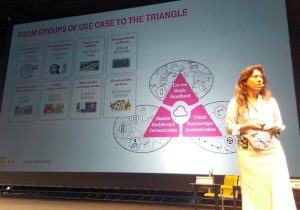At the European Conference on Networks and Communications (EuCNC 2017) in Oulu, Finland this week, 5G technical and policy experts from across Europe are meeting to discuss the remaining open issues with the imminent 5G communications standard before its ratification in 2018.

The fifth-generation mobile networks (5G) standards represent the next generation of mobile telephony subsequent to the current 4G LTE technology now prevalent in mobile devices around the globe. Public 5G networks are set to launch at the 2018 Winter Olympics in South Korea, with commercial rollout in 2020, leading to full market penetration by 2025.
With the 5G standards nearing ratification, the current state of the art consists of scattered 5G-like deployments around the world, as well as 5G test networks – most notably in Oulu, this small city in northern Finland a short distance from the Arctic Circle.
Yet, while the standards themselves are nearing completion, there remain several relatively minor areas of contention, as priorities differ across Europe, the US, and Asia. Working out these remaining issues is largely the focus of attention at the EuCNC conference.
The greater challenge surrounding 5G, however, is understanding the disruptive nature of the technology. Given the rise of the Internet of Things (IoT), 5G is well-positioned to be the standards framework for global communications platforms that support real-time interactions with IoT sensors and devices at massive scale.
Read the entire article at https://www.forbes.com/sites/jasonbloomberg/2017/06/14/transformative-5g-standards-near-completion/.
Intellyx publishes the Agile Digital Transformation Roadmap poster, advises companies on their digital transformation initiatives, and helps vendors communicate their agility stories. As of the time of writing, none of the organizations mentioned in this article are Intellyx customers. Image credit: Jason Bloomberg.



